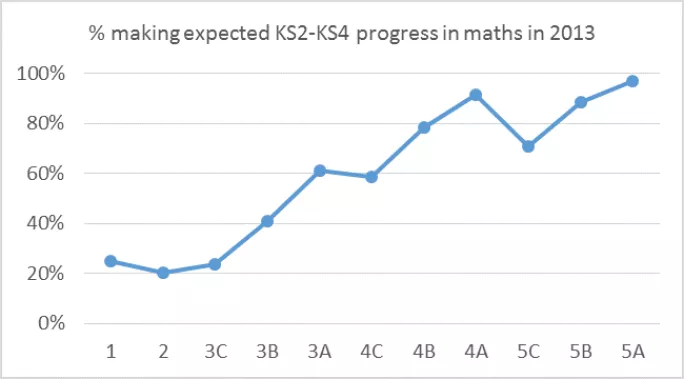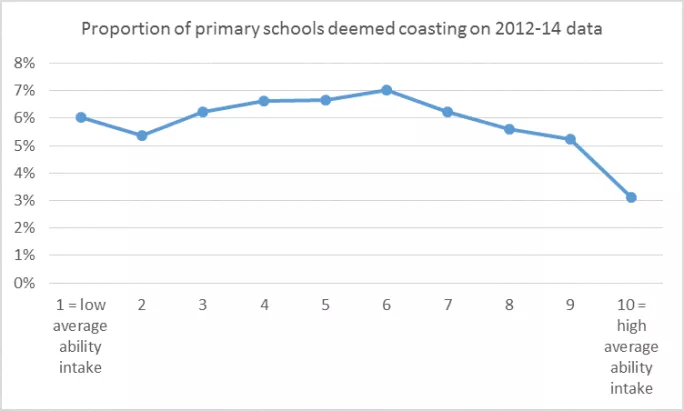Schools in disadvantaged areas more likely to be judged ‘coasting’
Share
Schools in disadvantaged areas more likely to be judged ‘coasting’
https://www.tes.com/magazine/archive/schools-disadvantaged-areas-more-likely-be-judged-coasting

Schools in more affluent areas are far less likely to be classed as “coasting” under the government’s new performance measure, according to new research.
An analysis of data by the Education Datalab found that nearly 1,200 schools could be judged as coasting, but researchers found they will be in predominantly in disadvantaged parts of the country.
Ministers announced this morning their intention to define coasting schools as those that have failed to push every pupil to reach their full potential over a number of years.
For a secondary school to be judged coasting, fewer than 60 per cent of its children must have achieved five A*-C GCSEs in 2014 and 2015 and it must be below the median level of expected progress. It would also have to fall below a still unspecified level in the new Progress 8 measure from 2016.
At primary level, the definition will apply to schools at which fewer than 85 per cent of children have achieved level 4 in reading, writing and maths for three years, and at which below-average proportions of pupils have made the expected progress between ages 7 and 11.
By using school data from 2012 to 2014, DataLab found that 406 secondary schools (13 per cent) could be defined as coasting, while 774, or 5 per cent, of primaries could.
However, when the academics looked at the school intakes, those with lower-attaining students were more likely to fall foul of the new definition.

Source: Education Datalab
Secondary schools serving more affluent intakes would escape the judgement, at least until 2018 when coasting would be defined purely on the new Progress 8 measure.
But even under this definition, schools in more disadvantaged areas were more likely to be deemed as coasting.

Source: Education Datalab
“Schools in more affluent areas will, on average, achieve higher Progress 8 scores and so will be less likely to be judged as coasting,” Dr Rebecca Allen, director of the Education Datalab, writes.
“To give an idea of the magnitude of the problem, in 2014 just 42 out of 380 schools with FSM6 (pupils that have been in receipt of free school meals in the last six years) below 10 per cent had a negative Progress 8 score. [However,] 191 out of 347 with FSM6 over 50 per cent had a negative Progress 8 score.”
The issue was less pronounced among primary schools, but it was still more likely that schools in poorer areas would be classed as coasting, Dr Allen adds.
“The ‘two levels of progress between KS1 and KS2’ indicator is as equally ugly as the KS2-KS4 indicator, but doesn’t display the same bias with respect to prior attainment,” she says. “This means that some primary schools serving affluent communities risk being judged as coasting, though not as many as for schools with higher FSM proportions.

Source: Education Datalab
You've reached your limit of free articles this month. Subscribe for £1 per month for three months and get: